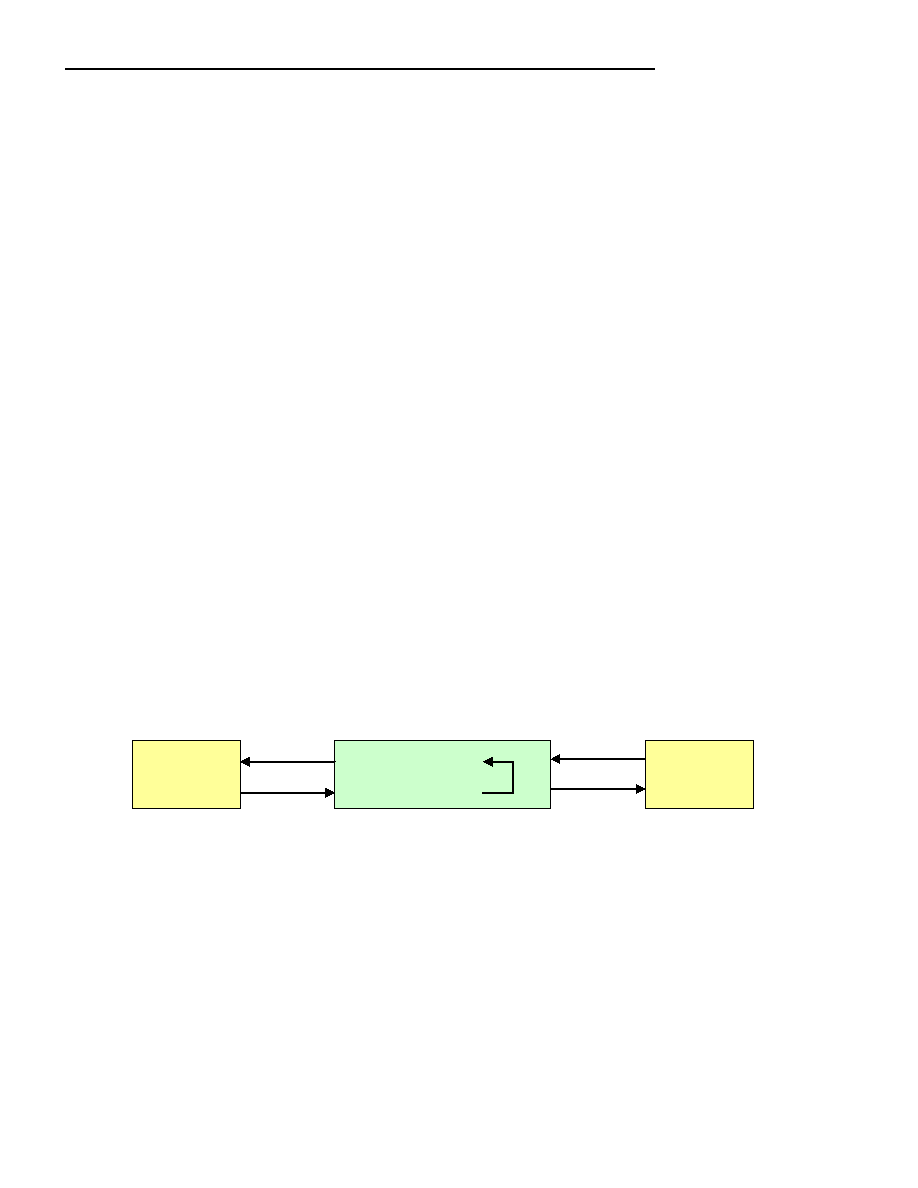- 您現(xiàn)在的位置:買賣IC網(wǎng) > PDF目錄1916 > DS34S132GN+ (Maxim Integrated Products)IC TDM OVER PACKET 676-BGA PDF資料下載
參數(shù)資料
| 型號: | DS34S132GN+ |
| 廠商: | Maxim Integrated Products |
| 文件頁數(shù): | 145/194頁 |
| 文件大?。?/td> | 0K |
| 描述: | IC TDM OVER PACKET 676-BGA |
| 產(chǎn)品培訓模塊: | Lead (SnPb) Finish for COTS Obsolescence Mitigation Program |
| 標準包裝: | 40 |
| 功能: | TDM-over-Packet(TDMoP) |
| 接口: | TDMoP |
| 電路數(shù): | 1 |
| 電源電壓: | 1.8V, 3.3V |
| 工作溫度: | -40°C ~ 85°C |
| 安裝類型: | 表面貼裝 |
| 封裝/外殼: | 676-BGA |
| 供應商設(shè)備封裝: | 676-PBGA(27x27) |
| 包裝: | 管件 |
| 其它名稱: | 90-34S13+2N0 |
第1頁第2頁第3頁第4頁第5頁第6頁第7頁第8頁第9頁第10頁第11頁第12頁第13頁第14頁第15頁第16頁第17頁第18頁第19頁第20頁第21頁第22頁第23頁第24頁第25頁第26頁第27頁第28頁第29頁第30頁第31頁第32頁第33頁第34頁第35頁第36頁第37頁第38頁第39頁第40頁第41頁第42頁第43頁第44頁第45頁第46頁第47頁第48頁第49頁第50頁第51頁第52頁第53頁第54頁第55頁第56頁第57頁第58頁第59頁第60頁第61頁第62頁第63頁第64頁第65頁第66頁第67頁第68頁第69頁第70頁第71頁第72頁第73頁第74頁第75頁第76頁第77頁第78頁第79頁第80頁第81頁第82頁第83頁第84頁第85頁第86頁第87頁第88頁第89頁第90頁第91頁第92頁第93頁第94頁第95頁第96頁第97頁第98頁第99頁第100頁第101頁第102頁第103頁第104頁第105頁第106頁第107頁第108頁第109頁第110頁第111頁第112頁第113頁第114頁第115頁第116頁第117頁第118頁第119頁第120頁第121頁第122頁第123頁第124頁第125頁第126頁第127頁第128頁第129頁第130頁第131頁第132頁第133頁第134頁第135頁第136頁第137頁第138頁第139頁第140頁第141頁第142頁第143頁第144頁當前第145頁第146頁第147頁第148頁第149頁第150頁第151頁第152頁第153頁第154頁第155頁第156頁第157頁第158頁第159頁第160頁第161頁第162頁第163頁第164頁第165頁第166頁第167頁第168頁第169頁第170頁第171頁第172頁第173頁第174頁第175頁第176頁第177頁第178頁第179頁第180頁第181頁第182頁第183頁第184頁第185頁第186頁第187頁第188頁第189頁第190頁第191頁第192頁第193頁第194頁

DS34S132 DATA SHEET
19-4750; Rev 1; 07/11
54 of 194
(G.GCR.EC25 = 0). In some cases ETHCLK can be tied to RXCLK to have the Phy device drive both inputs at one
time (as long as the RXCLK output from the Phy is a constant, non-gapped 125 MHz signal).
M.NET_CONTROL.TXP_HALT, START_TXP, TXP_EN and RXP_EN enable/disable the flow of RXP and TXP
data at the Ethernet MAC/Port.
The MAC must be programmed to operate in the Full-duplex mode (M.NET_CONFIG.EN_FRMS_UDUP = 0 and
M.NET_CONFIG.FULL_DUPLEX = 1). The Half-duplex mode and Pause Control are not supported because they
can adversely affect the delay/latency of the PW packets.
The standard maximum Ethernet Frame size is 1518 bytes. The MAC can be programmed to accept RXP Ethernet
frames with byte lengths of 1518 bytes or 1536 bytes using M.NET_CONFIG.RXP_1536FRMS or up to 2000 bytes
using M.NET_CONFIG.JUMBO_FRMS.
The MAC can be programmed to accept or discard all non-VLAN frames using M.NET_CONFIG.DISC_NOVLAN.
The MAC, when programmed as prescribed in the “Register Guide”, “Global Ethernet MAC” section, checks each
received RXP packet for valid Ethernet preamble, FCS, alignment and length. Packets with errors are discarded. In
the TXP direction the MAC appends an Ethernet FCS and adds padding to packets that are < 64-bytes in length.
The MDIO interface can be enabled using M.MAN_PORT_EN, and programmed using the M.PHY_MAN and
M.NET_STATUS registers.
MDC (MDIO Clock) is divided down from the SYSCLK input. MDC_CLK_DIV sets the “divided by” value and should
be set such that MDC frequency = SYSCLK ÷ (selected MDC_CLK_DIV divider value) ≤ 2.5 MHz. For example if
SYSCLK = 50 MHz and MDC_CLK_DIV = 010b (selects divide by 32), then the MDC frequency will be 1.56 MHz.
9.3.1.1 Ethernet Port Diagnostic Functions
The S132 supports Ethernet Loopback and Packet BERT Functions for diagnostic testing of the Ethernet Port.
9.3.1.1.1 Ethernet Loopback
The M.NET_CONTROL.LB_LOCAL = 1 enables the Ethernet Port Loopback that sends all receive TXP packet
data back in the RXP direction. CES, SAT, HDLC and Clock data/information that is received at a TDM Port is
encapsulated into TXP packets using the programmed Bundle settings. TXP packets that are initiated by the CPU
are also encapsulated into TXP CPU Packets. The combination of all TXP packet types is looped back in the RXP
direction. The RXP packets are forwarded according to the programmed RXP Bundle settings (forwarded to the
TDM Ports and/or CPU). No data is transmitted toward the Ethernet Phy and no data is received from the Ethernet
Phy while the Ethernet loopback is active. This loopback is depicted in Figure 9-21 using a T1/E1 example (the
loopback of TXP CPU packets to the CPU is not depicted).
Figure 9-21. Ethernet Port Local Loopback
9.3.1.1.2 Packet BERT
An Ethernet path can be tested using a BERT Test Pattern. The S132 supports “Full Channel” and “Half Channel”
Packet BERT Testing. Only one Packet BERT Test can be enabled on an S132 device at a time. The “Full
Channel” and “Half Channel” BERT Tests are depicted in Figure 9-22.
S132
Ethernet
Phy
T1/E1
Framer/LIU
X
相關(guān)PDF資料 |
PDF描述 |
|---|---|
| DS34T102GN+ | IC TDM OVER PACKET 484TEBGA |
| DS3501U+H | IC POT NV 128POS HV 10-USOP |
| DS3502U+ | IC POT DGTL NV 128TAP 10-MSOP |
| DS3503U+ | IC POT DGTL NV 128TAP 10-MSOP |
| DS3897MX | IC TXRX BTL TRAPEZIODAL 20-SOIC |
相關(guān)代理商/技術(shù)參數(shù) |
參數(shù)描述 |
|---|---|
| DS34S132GN+ | 功能描述:通信集成電路 - 若干 32Port TDM-Over-Pack Transport Device RoHS:否 制造商:Maxim Integrated 類型:Transport Devices 封裝 / 箱體:TECSBGA-256 數(shù)據(jù)速率:100 Mbps 電源電壓-最大:1.89 V, 3.465 V 電源電壓-最小:1.71 V, 3.135 V 電源電流:50 mA, 225 mA 最大工作溫度:+ 85 C 最小工作溫度:- 40 C 封裝:Tube |
| DS34S132GNA2+ | 功能描述:通信集成電路 - 若干 32Port TDM-Over-Pack Transport Device RoHS:否 制造商:Maxim Integrated 類型:Transport Devices 封裝 / 箱體:TECSBGA-256 數(shù)據(jù)速率:100 Mbps 電源電壓-最大:1.89 V, 3.465 V 電源電壓-最小:1.71 V, 3.135 V 電源電流:50 mA, 225 mA 最大工作溫度:+ 85 C 最小工作溫度:- 40 C 封裝:Tube |
| DS34T101 | 制造商:MAXIM 制造商全稱:Maxim Integrated Products 功能描述:Single/Dual/Quad/Octal TDM-over-Packet Chip |
| DS34T101_08 | 制造商:MAXIM 制造商全稱:Maxim Integrated Products 功能描述:Single/Dual/Quad/Octal TDM-over-Packet Chip |
| DS34T101_09 | 制造商:MAXIM 制造商全稱:Maxim Integrated Products 功能描述:Single/Dual/Quad/Octal TDM-over-Packet Chip |
發(fā)布緊急采購,3分鐘左右您將得到回復。